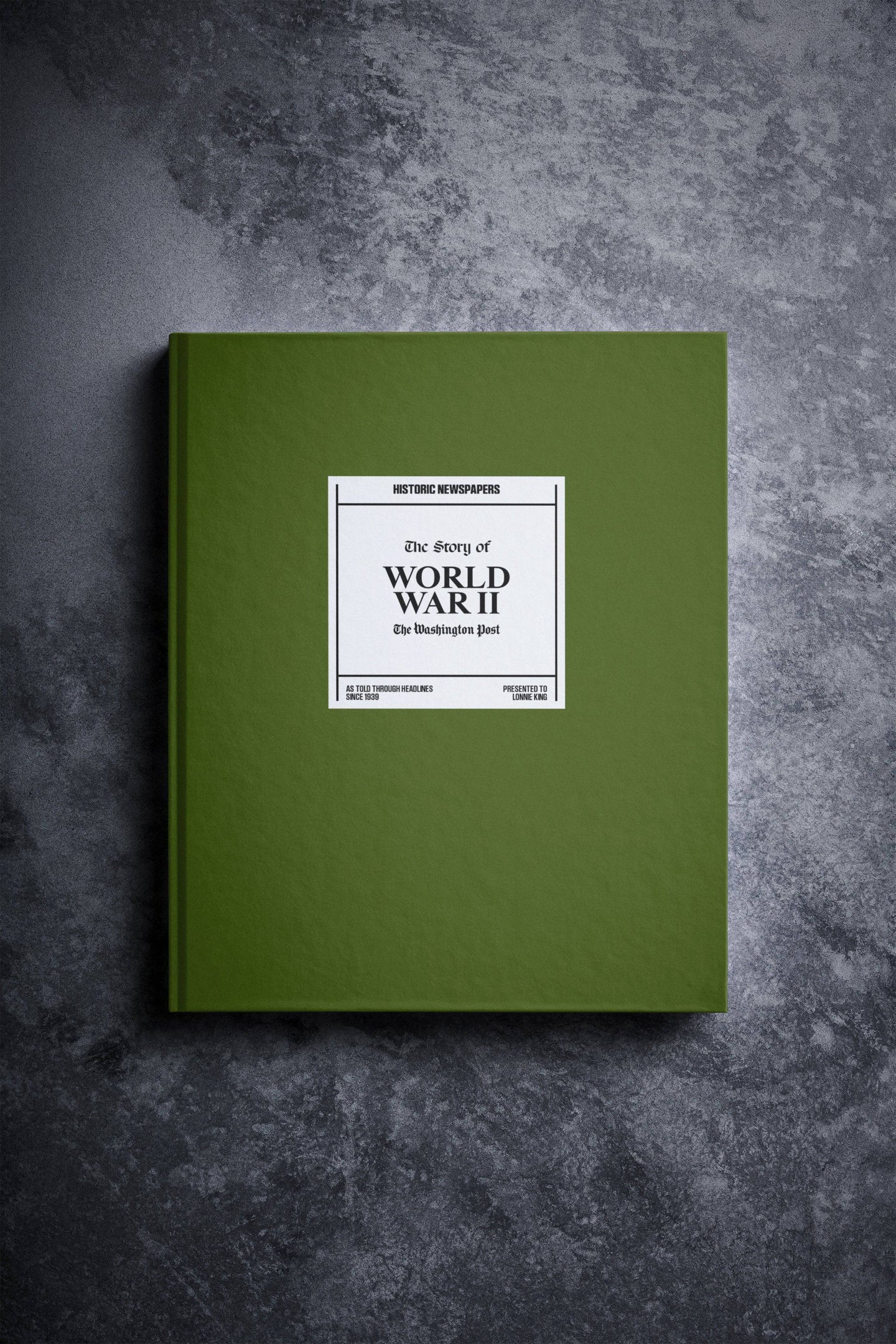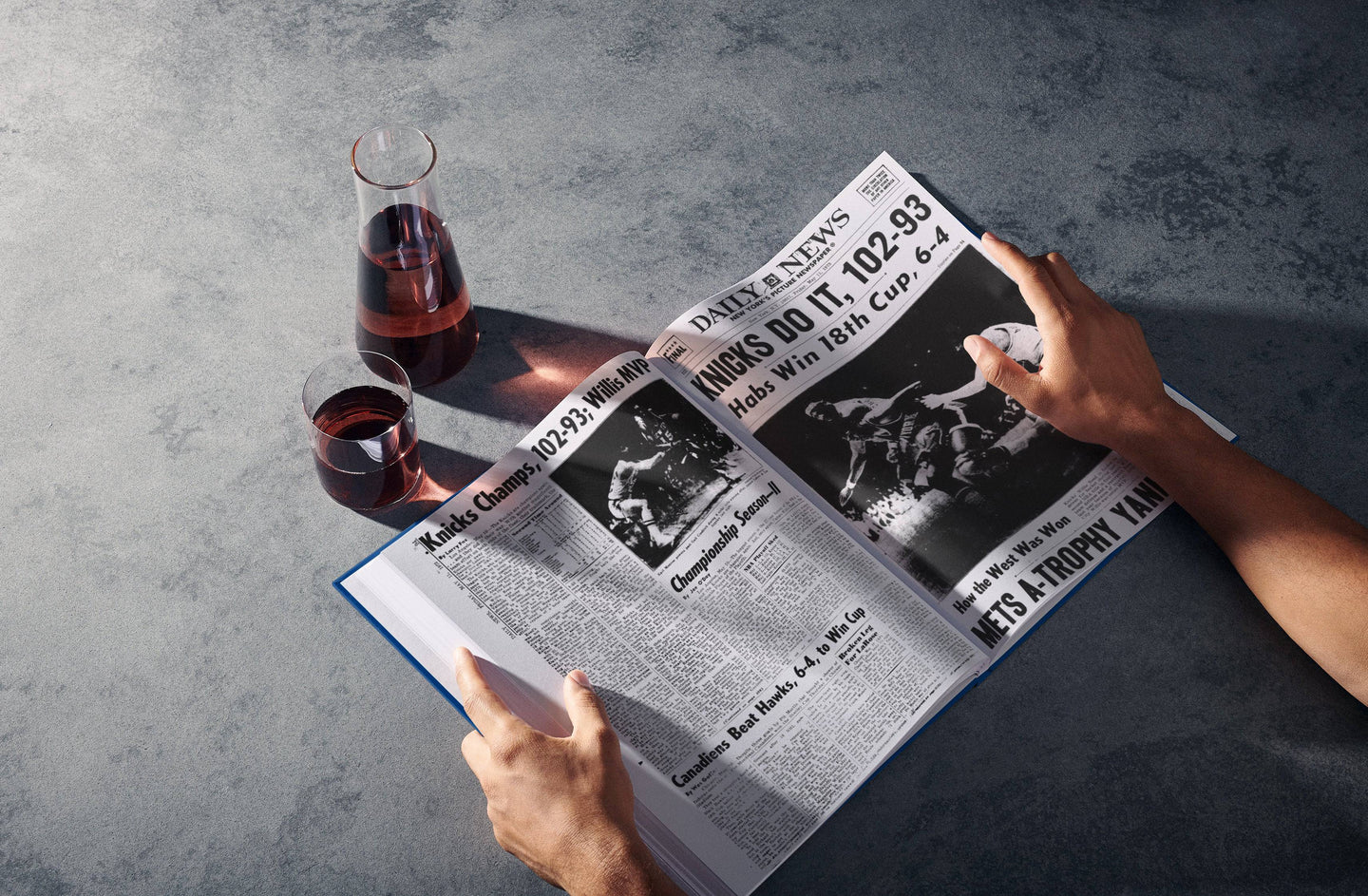The Daily Telegraph is part of the Telegraph Media Group and is owned by identical twin brothers, Sir David and Sir Frederick Barclay. The newspaper prints from Monday to Saturday in broadsheet format, and its sister publication prints on a Sunday. The Daily Telegraph is regarded as one of Britain’s “big three” quality newspapers. You can find so many back issues of the Daily Telegraph by searching our Daily Telegraph archives.
- Early History
- Edward Levy-Lawson and Viscount Burnham
- William and Gomer Berry
- Clare Hollingworth and Outbreak of World War II
- Viscount Camrose
- The Sunday Telegraph
- Later Issues
- Daily Telegraph Supplements
- Political Stance
- The Telegraph Circulation Figures
Early History
The year 1855 saw the abolition of stamp duty on newspapers, allowing the development of affordable daily papers for a wider public. The Daily Telegraph was founded by Colonel Arthur B Sleigh, as the ‘Daily Telegraph and Courier’ on 29th June 1855. The paper began to be sold at the price of two pence. Sleigh had set up the paper to pursue his quarrel with the Duke of Cambridge, later Commander-in-Chief of the Army.
Throughout its existence, the paper has been dedicated to special reporting, with almost every major war being covered by correspondents. It has also been involved in investigating government and trade union reporting.
As a settlement for the printing bill, the newspaper was sold to its printer, Joseph Moses Levy. Levy re-launched the paper on 17th September 1855, appointing his son Edward Levy-Lawson and Thornton Leigh Hunt as Editors-in-Chief. The price of the newspaper was reduced to one penny. The Daily Telegraph outsold The Times within a year, as The Times was being sold for seven pence. The word ‘Courier’ was dropped from the newspaper title eighteen months after its original launch.
Edward Levy-Lawson and Viscount Burnham
Edward Levy-Lawson controlled the Daily Telegraph long before the death of his father in 1888. He was appointed 1st Baron Burnham in 1903, reflecting his importance to the Fleet Street newspaper publishing industry. He retired as the proprietor of the paper in the same year and was described by Viscount Camrose as the ‘originator of morning journalism’.
After his death in 1916, he was succeeded by his son Harry Lawson Webster Levy-Lawson, who inherited the title 2nd Baron Burnham and was subsequently ennobled as 1st Viscount Burnham in 1919.

The Daily Telegraph front page, May 27, 1960
William and Gomer Berry
Viscount Burnham sold the Daily Telegraph to the newspaper publishers, William and Gomer Berry on 1st January 1928, but members of the Burnham family continued to serve on the board of the Daily Telegraph until 1986. In 1925, the Telegraph published the first crossword in a British newspaper.
The Berry brothers split their newspaper holdings in 1937; William Berry (1st Viscount Camrose) retained The Financial Times and the Daily Telegraph, whilst Gomer Berry (1st Viscount Kemsley) formed the Kemsley newspaper group, which included The Sunday Times, the Sunday Graphic and the Daily Sketch.
Clare Hollingworth and Outbreak of World War II
The newspaper had a breakthrough when one of their correspondents, Clare Hollingworth, announced the outbreak of World War II after she spotted German tanks on the Polish border. Her story made headlines three days before the invasion occurred and she was the first correspondent to report the outbreak, described as the “scoop of the century.” In 1982, Hollingworth was awarded an OBE by Queen Elizabeth II for her services to journalism.

Clare Hollingworth, reporter for the Daily Telegraph who first announced the outbreak of WWII
Image: Flickr
Viscount Camrose
Baron Camrose purchased the Morning Post on 24th August 1937, which was the favoured newspaper of the retired officer class. He merged the paper with the Daily Telegraph on 1st October 1937. The Daily Telegraph began printing news stories on the front page before the outbreak of the Second World War in 1939. The circulation of the Daily Telegraph under Viscount Camrose rose from 100,000 copies in 1930 to over one million copies in 1947.
The circulation practically doubled in just one day on 1st December 1930, due to the reduction in price from two pence to one penny. The newspaper also gained the 100,000 readers of the Morning Post, when the newspapers merged in 1937. On the death of Viscount Camrose in 1954, his younger son, Michael Berry, became Chairman and Editor-in-Chief of the Daily Telegraph. He remained in charge until 1987 and founded the Daily Telegraph’s sister paper, The Sunday Telegraph, in 1961.
The Sunday Telegraph
The Sunday Telegraph is printed in broadsheet format and takes a centre-right political stance, supporting the Conservative Party at the 2005 general election. It was the first new national Sunday newspaper to be published in the UK for 40 years. The Sunday Telegraph contained a greater coverage of news stories than other Sunday newspapers, which paid more attention to features and reviews. The first edition of the Sunday Telegraph contained news articles on the front and back pages, with classified advertising and sport at the end of the newspaper. The newspaper moved to full colour production for the first time in 2008. Take a look at our Sunday Telegraph archives to find back issues of the newspaper from the date of your choice.

The Sunday Telegraph front page, May 2012
Later Issues
In 1986, the first colour issue of the newspaper was released and the paper became all-electronic due to new technology. Mr Conrad Black, the Canadian financier and owner of the Hollinger Inc newspaper group, increased his shareholding in the Daily Telegraph and the Sunday Telegraph to 57% in February 1986, whilst Lord Hartwell subsequently stood down as both Chairman and Editor-in-Chief after thirty years in the positions. He was succeeded by Mr Conrad Black as Chairman in September 1987. In 1994, the Telegraph produced an online website called the Electronic Telegraph, being the first newspaper in Britain to launch online content.
Sir David and Sir Frederick Barclay purchased the Daily Telegraph and the Sunday Telegraph at the end of June 2004. In October 2006, they moved the newspapers from Canary Wharf to Buckingham Palace Road in London. They then renamed the company as The Telegraph Media Group. The Daily Telegraph was given a new look when it moved to full colour production for the first time on 2nd September 2008, due to new printing presses in Broxbourne (Hertfordshire), Knowsley (Merseyside) and Motherwell in Scotland. In 2017, the newspaper became the No 1 quality news brand, setting itself apart from its competitors with more than 25 million unique users.

The Sunday Telegraph front page, July 19, 1970
Daily Telegraph Supplements
The Daily Telegraph contains many supplements that deal with a variety of different topics. The Saturday edition of the Daily Telegraph currently contains the ‘Weekend’ section (includes puzzles and features on food, drink and the outdoors), plus the ‘Sport’, ‘Your Money’, ‘Review’, ‘Travel’, ‘Property’, ‘Gardening’ and ‘Motoring’ newspaper supplements. There are also two magazines; the ‘Telegraph Magazine’ (containing features, and regular items on food and the home) and the ‘Television & Radio’ magazine. Current weekday newspaper supplements include the separate ‘Business’ and ‘Sport’ sections, which are both published from Monday to Friday. A ‘Jobs’ supplement is also included with the paper on Thursdays.
Political Stance
The Telegraph takes a centre-right political stance, supporting the Conservative Party. Though the paper backed the Liberal Party under William Gladstone in its early years, the paper endorsed the Conservative Party at the 2005 General Election.
The Telegraph Circulation Figures
| Date | Circulation |
| 1863 | 120,000 |
| 1910 | 230,000 |
| 1921 | 180,000 |
| 1930 | 90,000 |
| 1939 | 737,000 |
| 1947 | 1,015,000 |
| 1956 | 1,075,460 |
| 1966 | 1,353,000 |
| 1976 | 1,308,000 |
| 1980 | 1,439,000 |
| 1992 | 1,038,138 |
| 2000 | 1,039,749 |
| 2005 | 920,745 |
| 2010 | 691,128 |
| 2015 | 494,675 |
| 2019 | 360,345 |
The Telegraph circulation figures have been a bit up and down over the years, especially between 1863 and 1939. The figures increased by more than double in 1910, then dropping hugely in 1930. The figures began picking up again after 1939, reaching peak circulation in 1980. Like other newspaper titles, the circulation figures have been declining in the 2010s, largely due to the rise of the Internet and the ability of readers to access online news.
Please note: These figures are for the Daily Telegraph only and do not include the Sunday issue.


























Follow us